Diagnosis
Types of Lyme Rashes
Many people know the classic bullseye rash associated with Lyme disease. What they may not know is that it is not the only type of rash presentation and in reality it occurs much less than you think.
In a recent study, researchers discovered that most rashes were actually uniform in color (51%), pink (74%), oval (63%), and with clear borders (92%). Only 6% of participants had the classic bulls-eye pattern. There are other studies which show a higher percentage of bulls eye presentation, but it is still much lower than most people and doctors realize.
This resource aims to educate about the different types of rashes, because early identification is key to avoiding long-term disseminated illness.


Introduction
A majority of people do not see a tick bite. However, many patients with early Lyme disease will present with some form of skin lesion within the first several weeks of infection.
The Lyme disease skin lesion is typically large, approximately 2 inches in size. It can last days or weeks and can enlarge in size over time. This factor helps to distinguish it from other types of bug bites. When the skin lesion is present, it is a more accurate way to diagnose Lyme disease than the currently available blood tests.
While some clinicians can recognize the classic target lesion aka bull’s-eye rash, the majority of Lyme disease skin lesions present differently. Any of the skin lesions shown below could be indicative of Lyme disease. It is important to note that skin lesions often hide in difficult to see places, such as behind the knee or in the groin or armpit, which is also where ticks may attempt to bite you.
Fever, chills, and muscular pain in the neck and extremities are also common early Lyme disease symptoms. The presence of these symptoms in addition to a rash should prompt a clinician to consider a possible Lyme disease diagnosis. For a full list of Lyme symptoms, check out this resource.
Rash Examples
Target Lesions With Central Clearing
This description refers to the bullseye rash. Only about 20% of Lyme disease lesions have a bull’s-eye appearance.
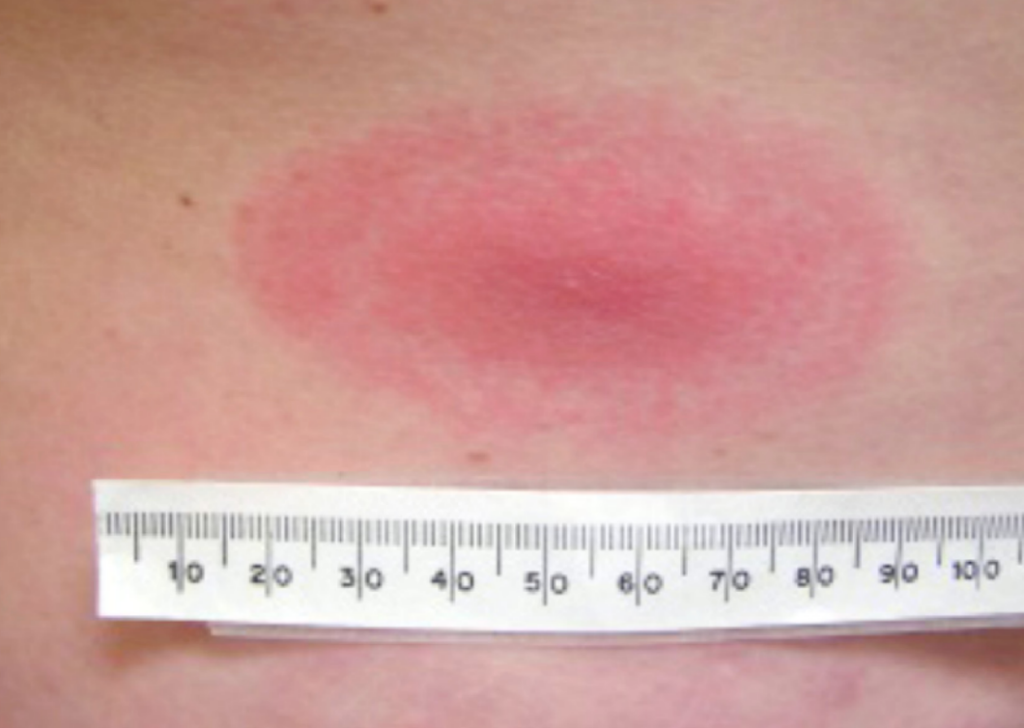

Blistering Lesions
These types of rashes typically present with an expanding red color with centralized blister or crust like substance.
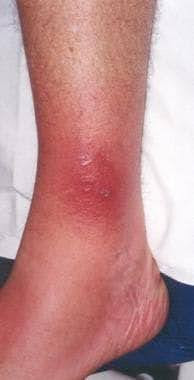
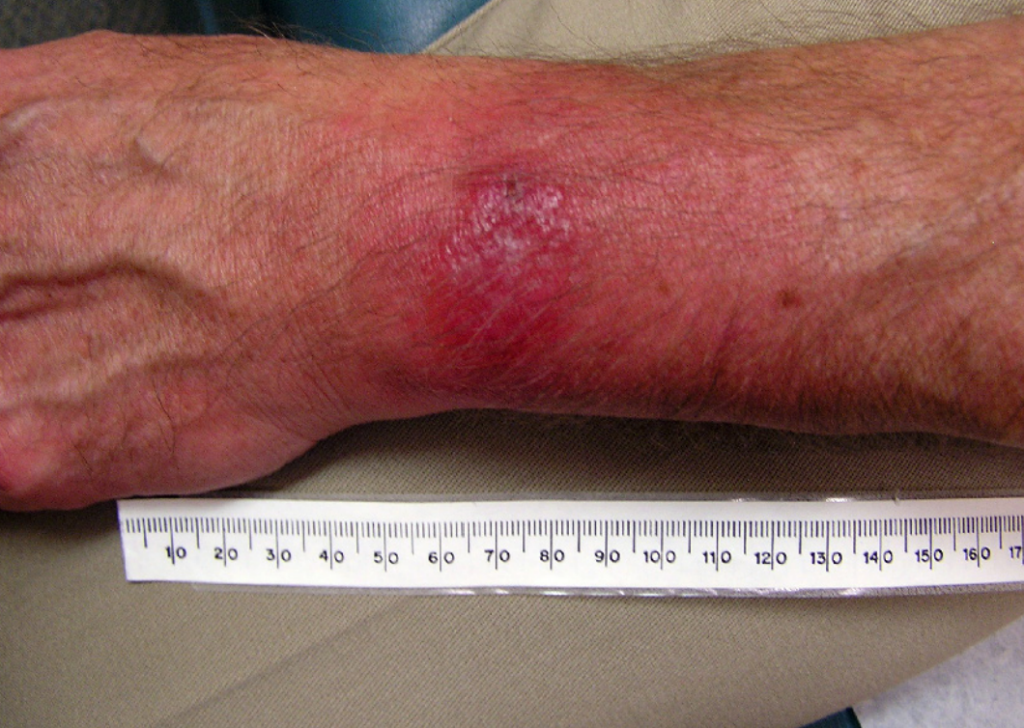
Uniformly Red Lesions
This is the most common type of Lyme disease skin lesion. They are typically uniformly red without the rings or target appearance. They are distinguishable from other skin rashes by their round or oval shape and sharply demarcated borders.
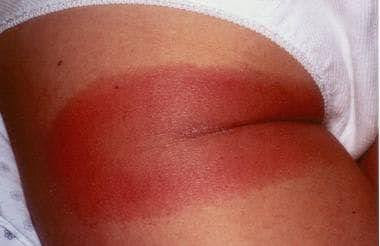
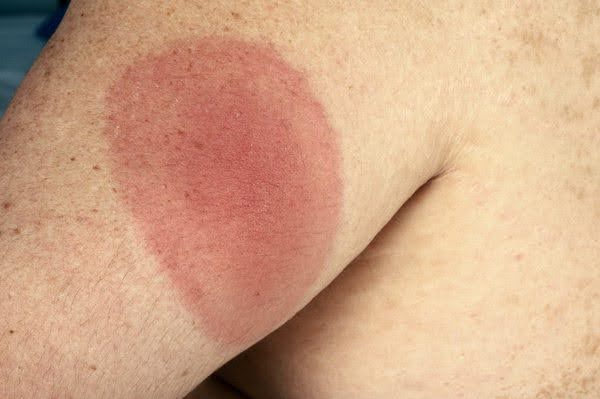
Blue-Red Lesions
Some Lyme disease skin lesions have a blue-purple color. Similar to the uniform lesions, they typically have a sharply demarcated border.
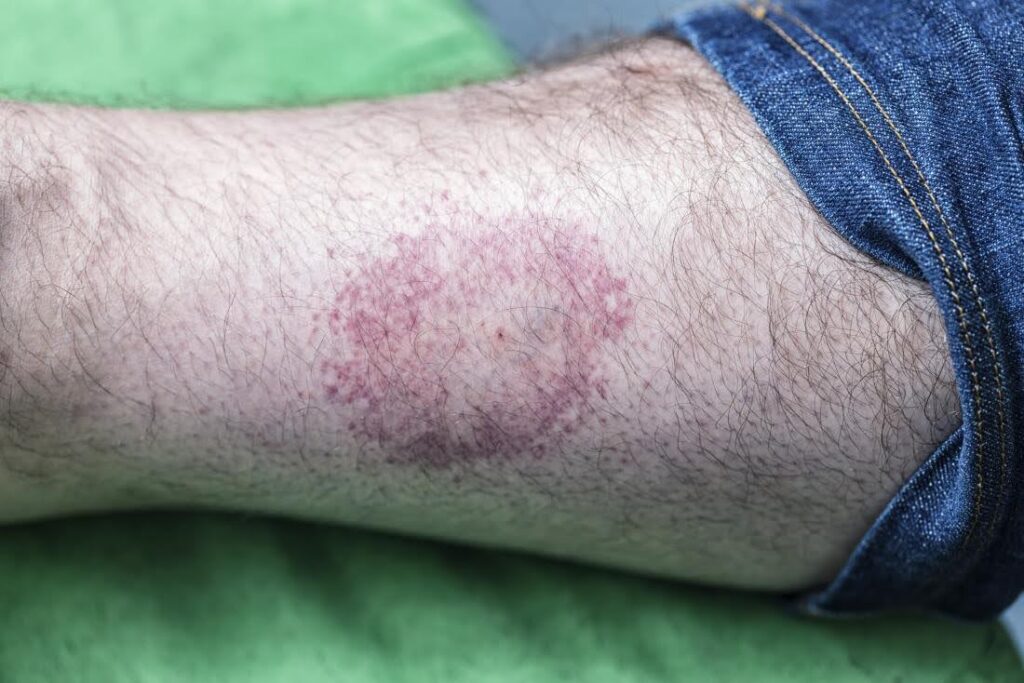
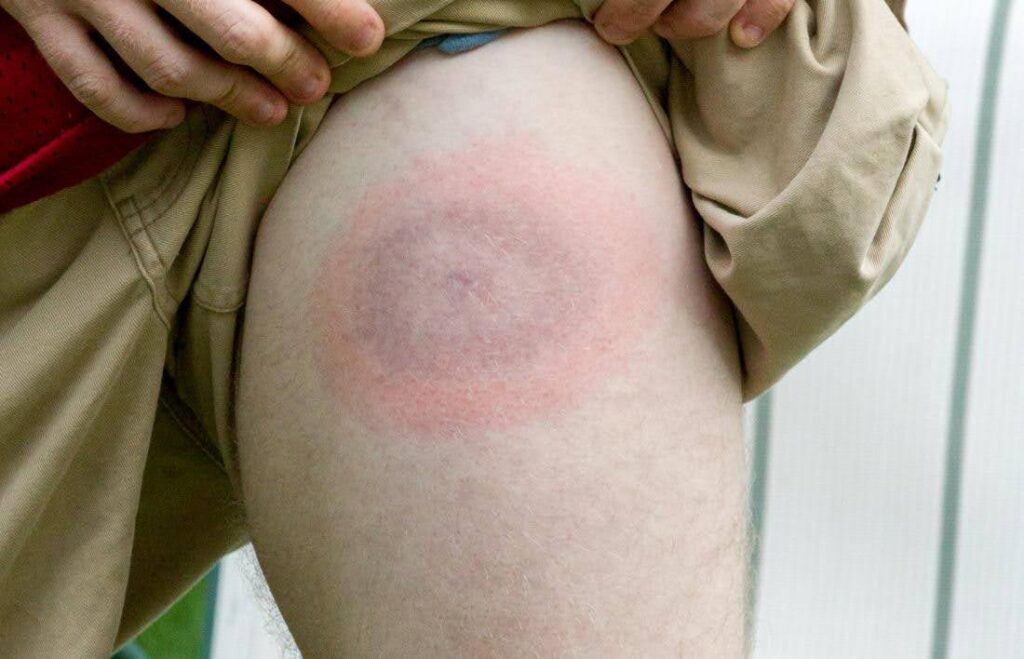
Multiple Rashes From Disseminated Infection
Just because you have multiple rashes does not mean you had more than one tick bite. Skin infection from Lyme disease can spread through the bloodstream to other areas of the body, including the joints, nervous system and other areas of the skin. This results in multiple skin lesions that often have variable shapes and appear throughout different areas of the skin.
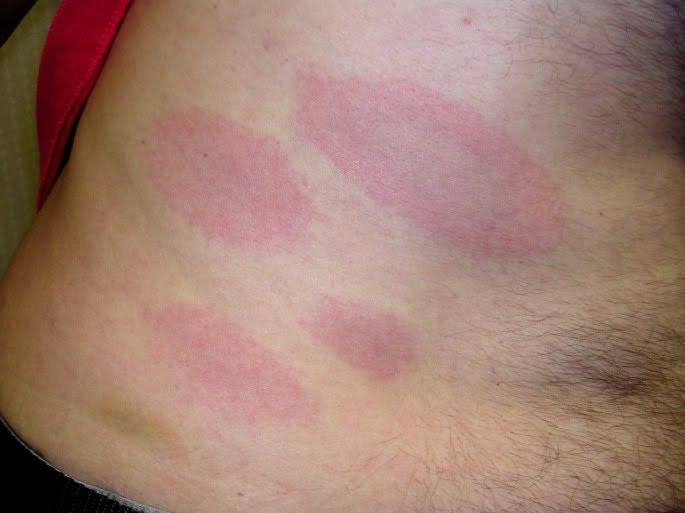

What To Do
If you find that you have a rash, we recommend that you see a primary care provider as soon as possible to receive prophylactic treatment.
If you have a more disseminated case of Lyme disease, it is important that you find a doctor known to specialize in treating tick-borne disease.

